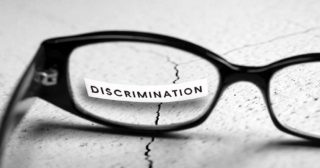
The role of the media in safeguarding against ageism
Are advertising and the media perpetuating ageism and if so, what are their regulatory...read more
A recent virtual roundtable explored the impact of Covid-19 on Diversity and Inclusion.

Will Diversity and Inclusion be boosted by the Black Lives Matter protests or will the economic disaster of Covid-19 see it falling off employers’ agenda as the labour market becomes more competitive for jobseekers?
A virtual roundtable held by workingwise.co.uk’s sister site, workingmums.co.uk, was held in July with diversity and recruitment experts from 12 organisations to discuss these questions.
Employers were asked about their own experiences since the lockdown. One employer spoke of the progress that had been made on diversity just before lockdown, but said the pandemic had turned the labour market on its head, meaning those who lost their jobs were no longer in a candidates’ market and would find it more difficult to gain employment. The longer they were out of work the more they risked losing skills. There was therefore a big need for upskilling programmes, he said, with another employer calling for apprenticeships to be open to everyone and for the apprenticeship levy to be more flexible so the scheme can apply to a broader range of people. Despite the changes brought by Covid-19, some employers added that skills shortages would persist in certain areas.
Other employers said they were increasing their work on D & I in the wake of the Black Lives Matter [BLM] protests. One said it had prioritised D & I during the pandemic and that there was a momentum building around it both in the UK and around the world. She said many businesses were waking up to the fact that they had not been doing enough on D & I, except on women and LGBT issues. The need for intersectionality was clear, she said.
Several employers talked about renewing their focus on D & I and reviewing their processes, for instance, anonymising recruitment and removing educational background. Employee expectations about action were shifting massively and things that were acceptable in the past were no longer acceptable. Senior managers were appreciating that D & I affects work as a whole and were aware that Covid-19 had had a different impact on different groups.
Several employers said organisations were now taking the time to listen to employees’ experiences of racism. The pandemic had also woken employers up to the need to communicate better and be more inclusive generally through using a variety of channels to get messages out and to listen to people, they said. Zoom meetings on racism had brought the issues home to senior leaders very immediately with employees able to comment in the chat column during sessions. One employer had created hundreds of D & I champions to work locally to increase diversity through outreach work and recruitment days and a competition for children on women in engineering.
Communication was really key for inclusion. Several employers had held education sessions following BLM. One employer had followed up with anonymous in-depth focus groups facilitated by an external consultant. Another global company with US outlets heard directly about the impact of BLM in the US. This had had a big impact and had led to moves to create UK platforms for sharing experiences about racism. Employers spoke of how they had discovered video as a tool for making remote workers feel more included and wanted to continue this in the future.
The roundtable covered everything from the need for structural reform, for instance, through the creation of D & I councils and inclusion managers to drive change, to how to address bias and embedding agile working. Employers also spoke about how data could move the D & I agenda forwards. One employer who worked in the construction sector said that her business was very fact based so the best way to approach diversity and inclusion issues was to make the intangible tangible using data showing how certain groups were better represented in applications and at certain levels than others. Showing people these visible patterns tells a story and helps to get buy-in for initiatives to address bias and training, she said.
For full details, click here.